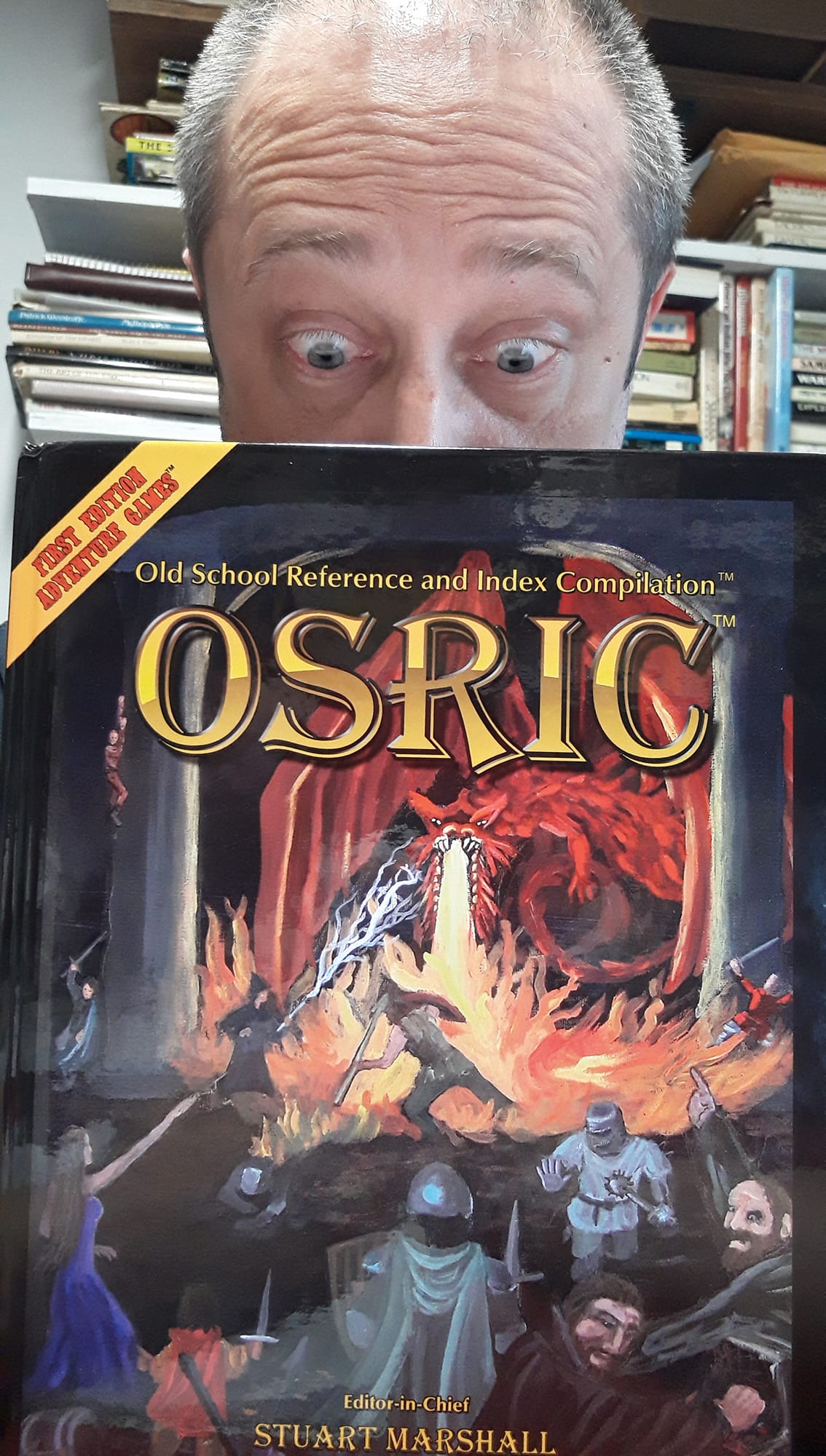OSRIC and Infravision
Well, once again, it’s been way too long since my last post. Pretend I’ve explained the usual excuses in the remainder of this paragraph.
Now check out the picture. Click to embiggen if you want.
That’s me gazing down in glee at my 386-page hardback copy of Black Blade Publishing‘s OSRIC, which stands for Old School Reference and Index Compilation. For the unwashed, OSRIC is 1E AD&D. Those 386 pages include 1E AD&D’s Player’s Handbook, Monster Manual, and Dungeon Master’s Guide reborn as an Old School ruleset that’s been cleaned up, clarified, and presented anew.
There’s a lot of nifty stuff in OSRIC. For example, consider OSRIC’s take on infravision:
“Infravision is the ability to see in the dark and is common to almost all subterranean creatures.”
Notice what infravision is not: It’s not the ability to detect gradations of heat. Notice also that in dungeons and caverns, infravision is pretty much ubiquitous among the monsters the heroes will encounter. Sound great if you’re a subterranean creature, but infravision has its limits:
“Infravision cannot be used within the ambit of any light source.”
I love that it says “within the ambit”. It’s not often a gamebook sends me toward a dictionary. I know enough Latin to recognize that “ambit” is almost certainly a Latin verb, and etymonline.com confirms my thoughts. “Ambit” derives from ambire, meaning “to go around, go about”. Its modern meaning tends toward “the bounds or limits of a place or district”.
In addition to a range limit (usually 60 feet), “Infravision does not detect colours and is of little help while searching or making minute examinations, so sapient creatures such as orcs may well prefer torchlight even if they possess infravision.”
On the run from orcs through a subterranean fungus forest? Well, if the orcs are tracking you, the orcs need torchlight. Searching for traps on that sarcophagus or reading your spellbook? You need torchlight as well.
One of the unfortunate consequences of the more recent idea related to infravision as darkvision is that torchlight, et cetera, becomes unnecessary for most non-human creatures. For humans especially, the lack of darkvision turns into a huge liability as the light sources necessary for exploring otherwise lightless caverns turns into a huge warning signal for any enemies the humans might approach.
OSRIC’s simple description of infravision ameliorates that issue as well as disposing on one of my 1E AD&D pet peeves, namely players and DMs wrangling over gradations of heat and what is visible versus invisible as a result. If I never hear another discussion about whether or not lurking zombies are the same temperature as their surroundings and, therefore, invisible to infravision….
I’m still digesting OSRIC, biting off a bit here and there. So far, I really like it. It stays true to its 1E AD&D roots while at the same time appearing fresh, as if it were very much its own thing. I have a feeling running OSRIC waits somewhere in the near future, especially since the school year ends this coming Friday.
Ah, blessed summer vacation!


Leave a Reply